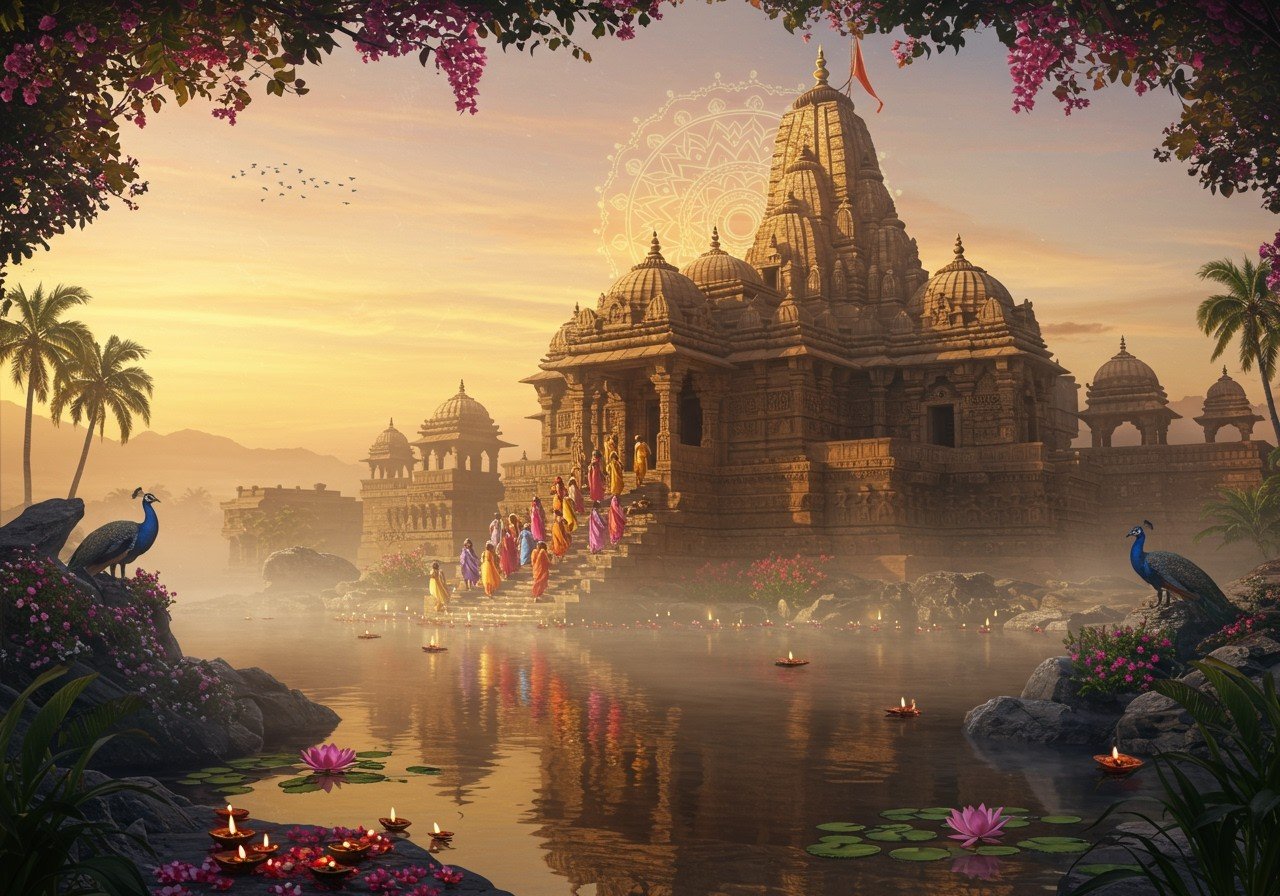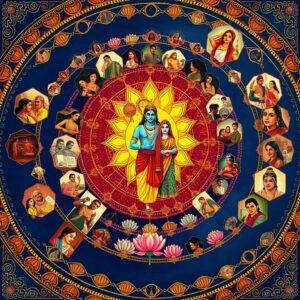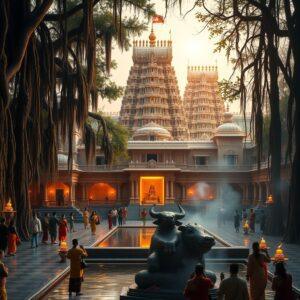
Journey to the revered Somarama Temple, one of the Pancharama Kshetras in Andhra Pradesh, India. Discover the significance of this sacred site dedicated to Lord Shiva and explore its historical and cultural importance, making it a must-visit for those seeking spiritual heritage.
Historical Significance
The Somarama Temple stands as a testament to Andhra Pradesh’s rich history and spiritual legacy. Its origins trace back to the 2nd century AD, with significant contributions from the Eastern Chalukyas. The temple’s connection to the Ramayana and Mahabharata underscores its mythological importance, while centuries of invasions and restorations have shaped its present form. Its strategic location fostered cultural exchange, resulting in a unique blend of architectural styles.
Architectural Marvels
The Somarama Temple showcases the splendor of Dravidian architecture. Intricate carvings and sculptures adorn the walls, depicting deities and mythological scenes. The sanctum sanctorum houses the revered crystal Shivalinga, believed to change color with the lunar phases. The temple’s Vimana (tower) is a marvel of ancient engineering and design.
Rituals and Festivals
Daily pujas maintain the sanctity of the Somarama Temple, a hub of religious activity. Major festivals like Maha Shivaratri (February/March) and Karthika Masam (November/December) are celebrated with unique rituals, including the Abhishekam (ritual bathing) of the Shivalinga. Temple priests preserve these sacred traditions, and the distribution of Prasadam (sacred offering) is an integral part of the experience.
Pilgrimage and Spiritual Experience
A pilgrimage to the Somarama Temple, one of the Pancharama Kshetras, is considered deeply transformative. Devotees of Lord Shiva believe a visit brings spiritual benefits, including liberation from sins and the attainment of Moksha (salvation). The serene environment fosters meditation and reflection. Accommodation and dining options are available nearby for pilgrims.
Local Culture and Traditions
The Somarama Temple is interwoven with the local culture of Andhra Pradesh. It serves as a center for religious and cultural activities, uniting communities. Traditional art forms like dance, music, and sculpture thrive around the temple. During festivals, local fairs showcase the region’s vibrant heritage, with devotees in traditional attire. The local cuisine, integral to temple rituals, adds another dimension to the spiritual experience. You can find more information about the temple’s history on Bing.
Poojn.in: Enhancing Your Spiritual Journey
Poojn.in, India’s leading online store for cultural and religious goods, offers a wide selection of products to enhance your spiritual journey. Prepare for your visit to the Somarama Temple with authentic puja items, ensuring a deeper connection with the sacred rituals.
We recommend our Mangalam Camphor (Butter Paper, 400g) for a pure and fragrant offering. This high-quality camphor is ideal for aarti and other temple rituals, creating a sacred atmosphere. For applying tilak, consider our Lord Shiva Marble Dust Murti (5-inch). This beautifully crafted murti can be used for personal worship at home, extending the spiritual connection beyond the temple visit. You can explore more products relevant to Lord Shiva worship on Poojn.in.
FAQs: Somarama Temple
What makes the Somarama Temple significant? The Somarama Temple is revered as one of the five Pancharama Kshetras, dedicated to Lord Shiva. It holds immense religious significance and is renowned for its unique history and architectural beauty.
Where is the temple situated? The temple is located in Bhimavaram, within the West Godavari district of Andhra Pradesh, India. You can find its exact location by searching for ‘somarama bhimavaram’ online.
Who was responsible for the construction of the Somarama Temple? The temple’s construction is attributed to the Eastern Chalukya King during the 9th century, reflecting the era’s architectural style and cultural richness.
Which festivals are prominently celebrated at the temple? Maha Shivaratri, Karthika Masam, and Kalyanotsavam are among the major festivals celebrated at the Somarama Temple, drawing devotees from across the country. For specific dates, it’s best to search for ‘somarama temple timetable’.
What distinguishes the deity at the Somarama Temple? The temple’s deity, Lord Shiva, is worshipped in the form of a Shivalinga, unique for its color-changing properties according to the lunar cycle, appearing white during a full moon and black during a new moon.
Are any unique rituals performed at the temple? Yes, the temple observes special rituals, including the highly auspicious Abhishekam (ritual bathing of the deity) and Rudrabhishekam, performed daily.
What are the temple’s visiting hours? The temple is generally open from 6:00 AM to 12:00 PM and 4:00 PM to 8:00 PM. However, it’s recommended to confirm the timings, especially during festivals or special events, by searching for ‘somarama temple timings’.
Is there a specific dress code for visitors? Modest attire is expected, with traditional Indian clothing preferred. Avoid wearing shorts, sleeveless tops, or other revealing garments.
Conclusion
The Somarama Temple offers a profound experience, connecting visitors to Andhra Pradesh’s spiritual and cultural heritage. Its ancient history, architectural beauty, and vibrant rituals create a unique blend of devotion and tradition. A visit here promises a journey that nourishes the soul and enriches the spirit.
Explore related articles on the Ramayana on poojn.in:


